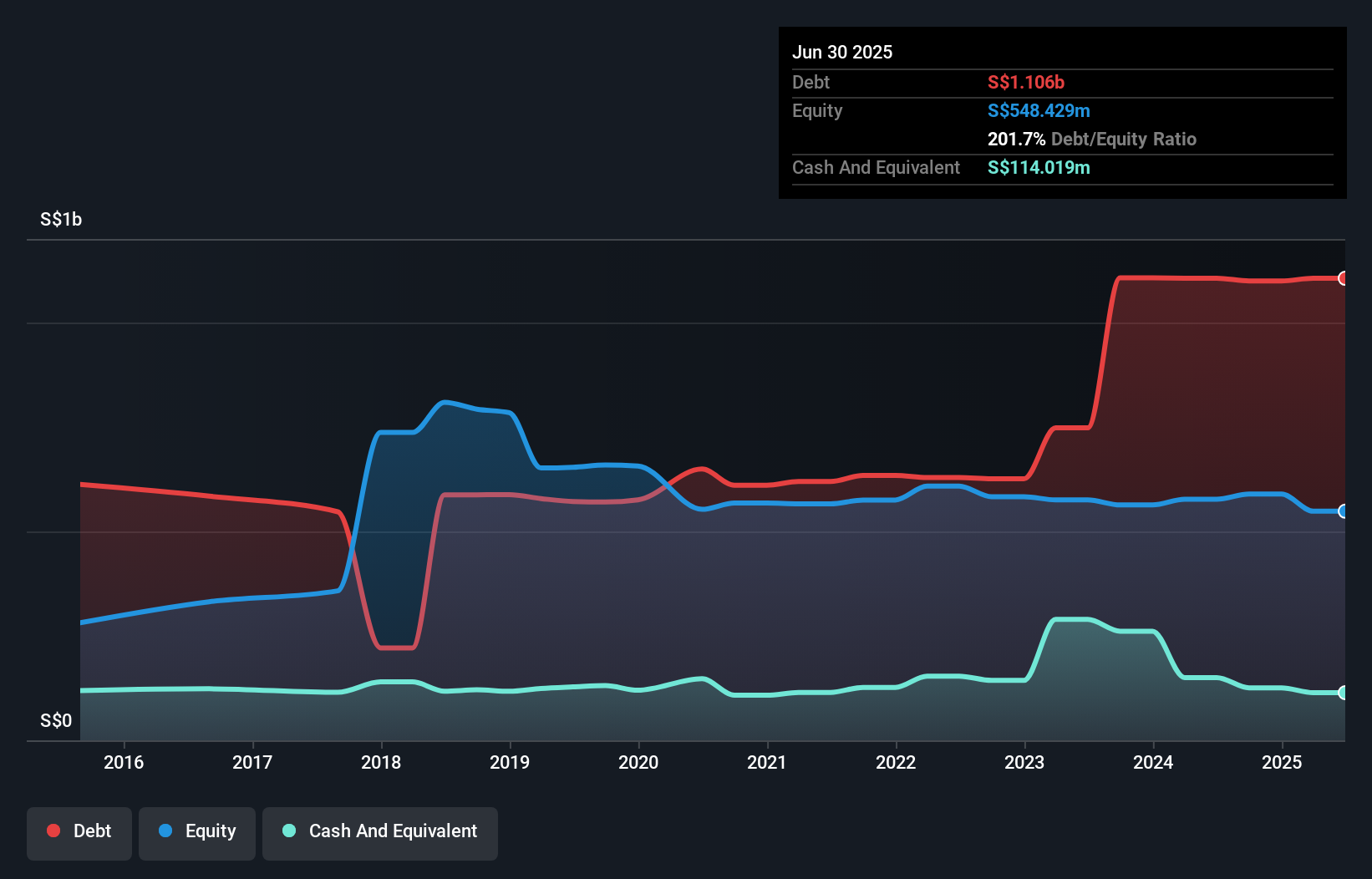Legendary fund manager Li Lu (who Charlie Munger backed) once said, 'The biggest investment risk is not the volatility of prices, but whether you will suffer a permanent loss of capital.' When we think about how risky a company is, we always like to look at its use of debt, since debt overload can lead to ruin. We note that Thomson Medical Group Limited (SGX:A50) does have debt on its balance sheet. But is this debt a concern to shareholders?
What Risk Does Debt Bring?
Generally speaking, debt only becomes a real problem when a company can't easily pay it off, either by raising capital or with its own cash flow. Part and parcel of capitalism is the process of 'creative destruction' where failed businesses are mercilessly liquidated by their bankers. However, a more usual (but still expensive) situation is where a company must dilute shareholders at a cheap share price simply to get debt under control. Of course, plenty of companies use debt to fund growth, without any negative consequences. The first thing to do when considering how much debt a business uses is to look at its cash and debt together.
What Is Thomson Medical Group's Net Debt?
As you can see below, Thomson Medical Group had S$1.11b of debt, at June 2025, which is about the same as the year before. You can click the chart for greater detail. On the flip side, it has S$114.0m in cash leading to net debt of about S$991.9m.

How Strong Is Thomson Medical Group's Balance Sheet?
We can see from the most recent balance sheet that Thomson Medical Group had liabilities of S$268.8m falling due within a year, and liabilities of S$967.4m due beyond that. Offsetting these obligations, it had cash of S$114.0m as well as receivables valued at S$56.5m due within 12 months. So its liabilities outweigh the sum of its cash and (near-term) receivables by S$1.07b.
This is a mountain of leverage relative to its market capitalization of S$1.61b. Should its lenders demand that it shore up the balance sheet, shareholders would likely face severe dilution.
View our latest analysis for Thomson Medical Group
We measure a company's debt load relative to its earnings power by looking at its net debt divided by its earnings before interest, tax, depreciation, and amortization (EBITDA) and by calculating how easily its earnings before interest and tax (EBIT) cover its interest expense (interest cover). Thus we consider debt relative to earnings both with and without depreciation and amortization expenses.
Weak interest cover of 0.28 times and a disturbingly high net debt to EBITDA ratio of 23.8 hit our confidence in Thomson Medical Group like a one-two punch to the gut. The debt burden here is substantial. Even worse, Thomson Medical Group saw its EBIT tank 78% over the last 12 months. If earnings keep going like that over the long term, it has a snowball's chance in hell of paying off that debt. When analysing debt levels, the balance sheet is the obvious place to start. But ultimately the future profitability of the business will decide if Thomson Medical Group can strengthen its balance sheet over time. So if you're focused on the future you can check out this free report showing analyst profit forecasts.
Finally, while the tax-man may adore accounting profits, lenders only accept cold hard cash. So we clearly need to look at whether that EBIT is leading to corresponding free cash flow. Over the last three years, Thomson Medical Group recorded free cash flow worth a fulsome 95% of its EBIT, which is stronger than we'd usually expect. That positions it well to pay down debt if desirable to do so.
Our View
To be frank both Thomson Medical Group's interest cover and its track record of (not) growing its EBIT make us rather uncomfortable with its debt levels. But on the bright side, its conversion of EBIT to free cash flow is a good sign, and makes us more optimistic. We should also note that Healthcare industry companies like Thomson Medical Group commonly do use debt without problems. Looking at the balance sheet and taking into account all these factors, we do believe that debt is making Thomson Medical Group stock a bit risky. That's not necessarily a bad thing, but we'd generally feel more comfortable with less leverage. When analysing debt levels, the balance sheet is the obvious place to start. However, not all investment risk resides within the balance sheet - far from it. Case in point: We've spotted 2 warning signs for Thomson Medical Group you should be aware of, and 1 of them is potentially serious.
If, after all that, you're more interested in a fast growing company with a rock-solid balance sheet, then check out our list of net cash growth stocks without delay.
Valuation is complex, but we're here to simplify it.
Discover if Thomson Medical Group might be undervalued or overvalued with our detailed analysis, featuring fair value estimates, potential risks, dividends, insider trades, and its financial condition.
Access Free AnalysisHave feedback on this article? Concerned about the content? Get in touch with us directly. Alternatively, email editorial-team (at) simplywallst.com.
This article by Simply Wall St is general in nature. We provide commentary based on historical data and analyst forecasts only using an unbiased methodology and our articles are not intended to be financial advice. It does not constitute a recommendation to buy or sell any stock, and does not take account of your objectives, or your financial situation. We aim to bring you long-term focused analysis driven by fundamental data. Note that our analysis may not factor in the latest price-sensitive company announcements or qualitative material. Simply Wall St has no position in any stocks mentioned.
About SGX:A50
Thomson Medical Group
An investment holding company, provides healthcare services for women and children in Singapore, Malaysia, and Vietnam.
Moderate growth potential and slightly overvalued.
Similar Companies
Market Insights
Community Narratives



